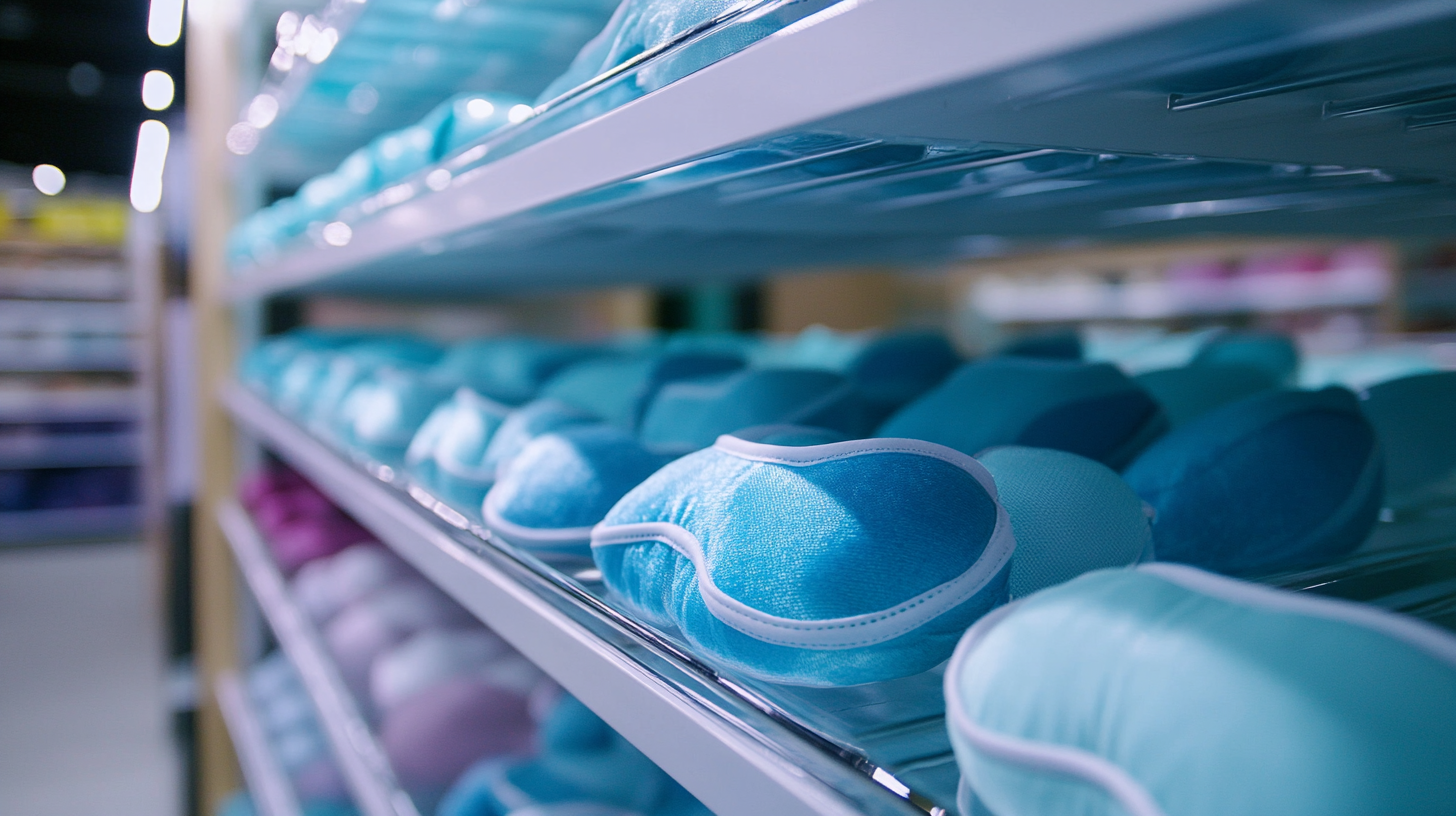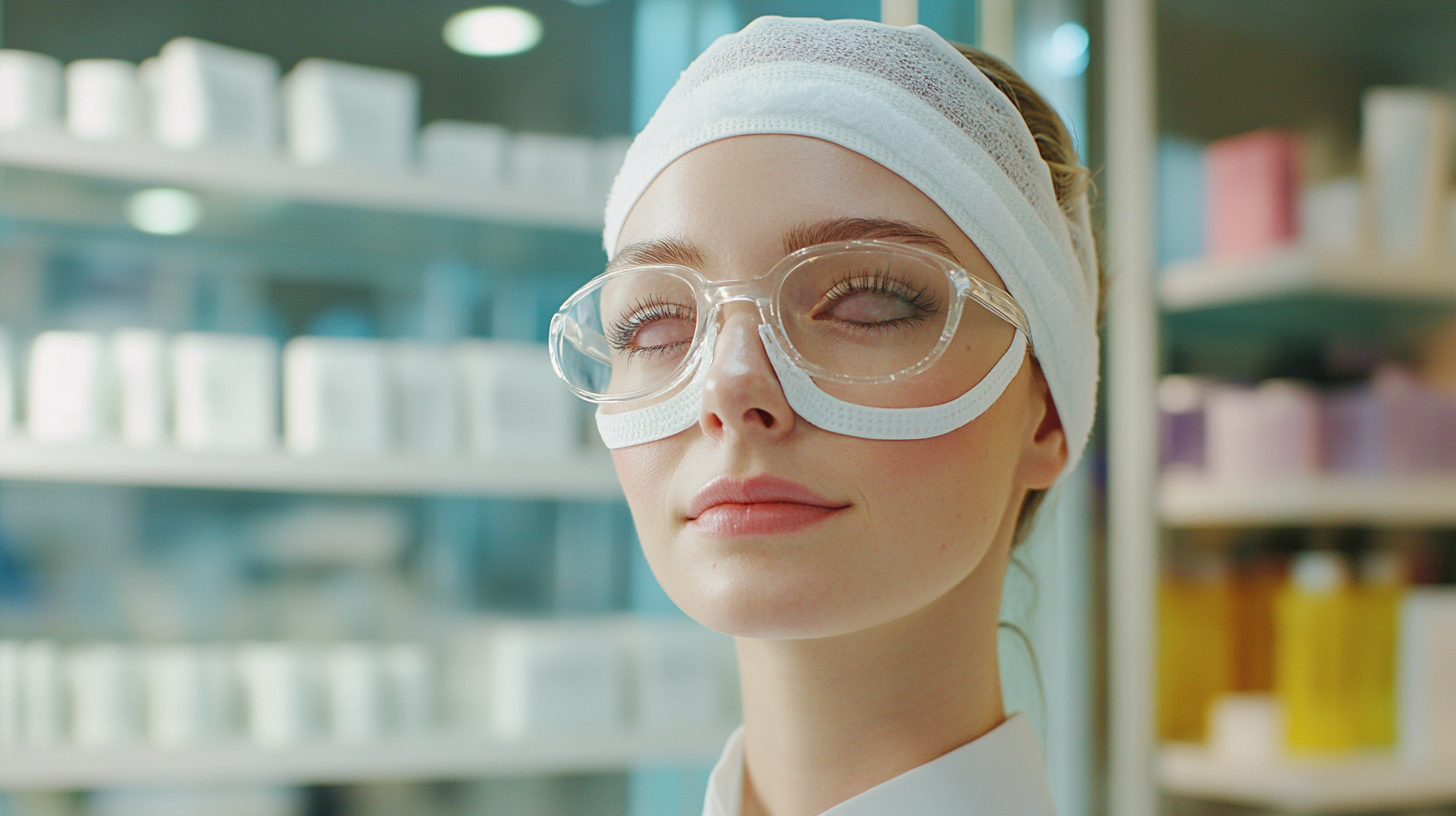The global eye mask market has experienced phenomenal growth over the past few years, due mainly to an unprecedented rise in health and wellness awareness among consumers. As per a Grand View Research report, the global eye mask market size was valued at USD 1.2 billion in 2022 and is expected to grow at a compound annual growth rate (CAGR) of 5.9% from 2023 to 2030. As more and more people engage in skincare and relaxation activities, they consider eye masks an essential product for better sleep and stress release; hence, their popularity in retail chains worldwide is blossoming.
On the contrary, sourcing high-quality eye masks is a challenge for retailers today in order to meet consumers' demands and maintain competitive pricing. As stated in a Market Research Future report, consumers are becoming more selective in their preferences for what they want from an eye mask: they want something that works yet also is sustainable and ethically sourced. Retailers have to deal with supplier reliability, quality control, and compliance with international regulations to make sure that they can pass along eye masks of great quality that fit the updated standard. Understanding these challenges will be critical in the successful navigation of the changing landscape of global retail.

Sourcing high-end eye masks from various retail markets has its unique challenges, especially when it comes to finding reliable suppliers for premium products. As the consumer demand for efficient and luxurious eye-care solutions grows, retailers are left to navigate a maze of possible manufacturers in which the need for high-quality materials and innovative designs requires partnerships with suppliers that understand the market and have the capacity to deliver consistently. One of the biggest problems with finding reliable suppliers is the great number of supply options, each promising the highest quality and the most efficacious products. Retailers need to conduct extensive due diligence in ensuring that a potential partnership is with a credible supplier; checking the supplier's standing, certifications, and past client testimonials. It is a time-consuming affair shrouded in uncertainty since some suppliers may become very loud about their capabilities, while others may just not have adequate quality control measures in place. It becomes paramount for any retailer to create criteria based around ethical sourcing and sustainability as a minimum standard against which they evaluate potential suppliers. Geographical conditions also contribute to the complex nature of the selection process. Importing from different regions causes disparities in product quality, lead time, and communication. Retailers must have a solid understanding of international trade regulations and logistics, which will be paramount in securing a steady and reliable supply chain. With consistent communication and frequent visits, solid relationships with suppliers will equally enhance service and the development of better products to ensure that customers get their premium eye masks.

Sourcing for high-quality eye masks has its own challenges, mostly in terms of evaluating the materials on the market. Suppliers must balance the buyer's expectations of high-quality products with the costs of manufacturing. The material used directly affects the efficacy, comfort, and aesthetics of the eye mask; therefore, a good selection should focus on not just comfort but also durability.
Natural options such as cotton or silk are usually preferred for their breathable and hypoallergenic qualities. These, however, might temper with the profit margins if not assessed correctly as they are expensive; while the cheaper, versatile look of synthetic alternatives can compromise comfort and compatibility with skin. Hence, the assessment of the sourcing process must be comprehensive, including the ingredients' compatibility with the brand values and what the customers expect.
Besides materials selection, the manufacturers are also expected to evaluate the total production process to maintain a fair quality-price ratio. This involves cooperating with suppliers, enforcing quality control measures, and investigating new manufacturing processes to provide efficiency. By improving the quality using technologies and material sciences, brands can navigate the demanding environment of eye mask production.

When one sources high-quality eye masks for retail markets globally, compliance and standing by the regulations is a paramount obstacle. Each region has its own laws as they pertain to product safety, the environment, and labeling. For example, there are strict rules in the European Union regarding cosmetic products, which state that all ingredients must have undergone testing and fully comply with the EU Cosmetics Regulation. All these mean the manufacturers must ensure that their eye masks offer the benefits intended and also meet the safety standards by regional authorities.
To enter different markets selling eye masks, a brand must conduct thorough research and have in-depth knowledge regarding compliance frameworks specific to a particular geography. For example, in the US, the FDA oversees skincare products and companies must be able to show how effective and safe their eye masks are. Furthermore, trade compliance should be observed whenever importing materials and finished products, since tariffs and import restrictions could significantly impact costs and logistics.
Sustainability is also emerging as a key compliance issue. For many consumers, environmental impact factors are becoming ever more significant in what they buy. Markets have also started demanding goods that are not only safe but responsibly produced. Companies need to be ahead in efforts to meet consumer expectations by developing sustainable sourcing practices as well as transparent supply chains. By emphasizing compliance with these changing standards, companies also build trust in consumers and consequently position themselves more favorably in a competitive global marketplace.

In recent years, the demand for innovative eye masks has surged significantly, truly a reflection of shifting consumer preferences and increased awareness of wellness. In a U.S. News 360 Reviews report, the evolution of sleep styles among consumers is becoming more pronounced, catering to a specific demand for products that generally enhance one particular sleep experience. Some are becoming more and more interested not just in simple Sleep Masks, but also in sleep masks with extras like cooling gels, aromatherapy, and comfort-adjusting materials.
The global sleep mask market, which was valued at approximately USD 17.9 million in 2024, is projected to grow at a CAGR of 5.1% through 2030. This growth trajectory dovetails with the larger change in consumer behavior wherein personal health and wellness are becoming prime criteria for purchase decisions. Retailers are responding with eco-friendly and multifunction products through sustainable practices and innovative designs with which consumers resonate.
As the market unfolds, brands should keep an ear to the ground for these changing consumer expectations. The focus on innovative features promoting personalized sleep experiences with respect to cost and sustainability will be a major draw for consumers. This development, coupled with stances supported by consumer preference research, will effectively carve the next stage of evolution of the eye mask market in the global retail space.
With unique challenges that need to be negotiated by manufacturers and retailers, the sourcing of quality eye masks poses challenges set in the competitive arena of global retail. With the eye mask market projected to surpass USD 2.5 billion by 2025 due to rising consumer demands in skin care, quality becomes vital if a brand intends to keep its image intact. A practical implementation of quality control in the eye mask manufacturing process could entail hiring the supplier based on a stringent evaluation. As stated in a report by Mordor Intelligence, about 55% of manufacturers consider supplier reliability to be an important concern, a fact that accentuates the need for partnering with credible sources fulfilling the given industry standards.
In addition, third-party testing for product safety and efficacy could increase consumer trust and, therefore, brand loyalty. The American Society for Testing and Materials (ASTM) establishes standards to assist companies in creating best practices for product testing, which could ensure that the eye masks could perform to expectations and follow safety requirements. Another 62% of companies whose quality control systems are only short of comprehensive say they have satisfied customers, thus proving that quality-oriented sourcing really works and pays off.
Also, product quality can drastically be enhanced through the application of current-age technology in the manufacturing processes. Automation production lines and AI-controlled quality inspection techniques can minimize human error and enhance uniformity in production. As competition increases in the worldwide eye mask market, the manufacturer applying such quality control approaches will not only serve demanding customers but also ensure sustainable growth for itself in an ever-changing market.
The key compliance challenges include navigating various regional regulations concerning product safety, environmental impact, and labeling requirements. Each region, such as the EU and the U.S., has its own set of rules that brands must adhere to.
In the EU, manufacturers must comply with the EU Cosmetics Regulation, which requires that all ingredients are tested for safety and efficacy to ensure the eye masks are safe for consumers.
The FDA oversees skincare products, including eye masks, requiring companies to provide evidence of the products' efficacy and safety before they can be marketed.
Sustainability is important because consumers are increasingly concerned about the environmental impacts of their purchases. Compliance now includes not only safety regulations but also responsible production practices.
Implementing a rigorous supplier evaluation process is recommended, as partnering with reliable suppliers who adhere to industry standards is critical for maintaining product quality.
Third-party testing enhances consumer trust by providing independent verification of product safety and efficacy, which can lead to increased brand loyalty.
Approximately 62% of companies that invest in comprehensive quality control measures report improved customer satisfaction.
Integrating automated production lines and AI-driven quality inspection tools can minimize human error and enhance consistency in product output, significantly improving overall product quality.
Prioritizing quality control strategies allows companies to meet consumer demands effectively and positions them for sustained growth in a competitive market.